Best Samsung monitors: Samsung screens for all kinds of users
We think these are the best Samsung monitors right now for photographers, creatives, gamers and all round use
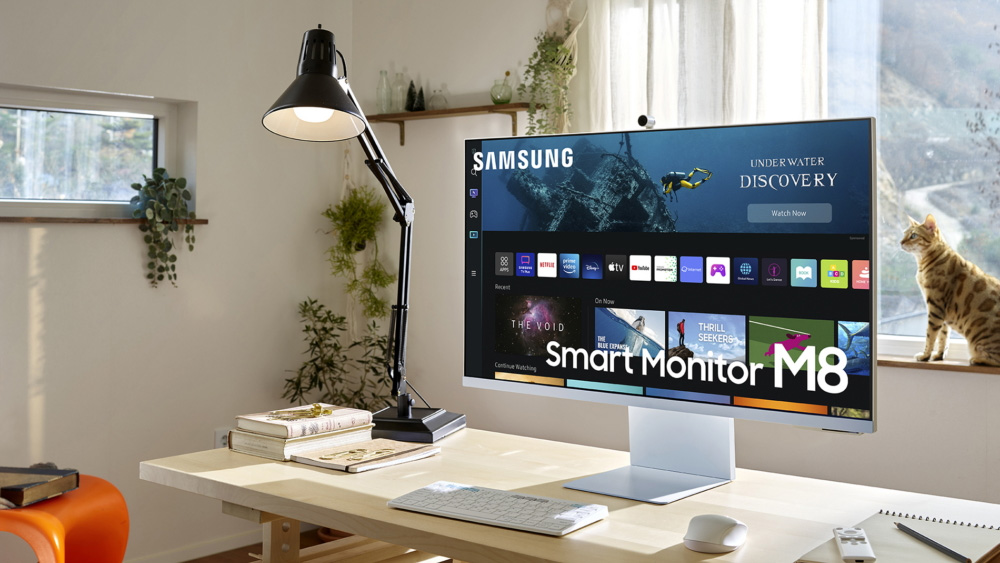
Maybe it’s time to take a good look at the best Samsung monitors. There are a lot of excellent monitors from manufacturers like Dell, Asus, BenQ, and Acer, monitors that use IPS technology to deliver exceptional color reproduction and superior viewing angles. However, Samsung has stuck with VA (vertical alignment) panels for most of its monitors. (The manufacturer has switched to IPS panels for some of its TV offerings.)
Even so, VA panels have their strengths. They tend to have higher contrast ratios, allowing them to be excellent monitors for gaming and creative workloads done in the dark. Plus, when Samsung builds premium monitors, it really delivers. Samsung’s premium offerings – especially the curved ones – are among the best of the best, outperforming other high-end models from rival manufacturers.
Especially for gaming, the best Samsung monitors are worth considering. They might not be as good when it comes to color coverage and viewing angles. At least the VA models aren’t, and there are a few of those. So, you might be hard-pressed to find an ideal option for video editing, especially if you usually work in the DCI-P3 and Adobe RGB color spaces. If you want the best video editing monitor, you might be better off with something from BenQ and Eizo.
However, if you’re a gamer, a photographer, or any creative professional who uses the sRGB color space, the right display from Samsung will go a long way.
As with any monitor, you should consider a few things before getting one. Samsung has variety, but if you want the best, your choices may be limited, so you should seriously consider what you want out of the display before hitting buy.
Knowing the resolution and panel size you need is essential. But, you should also figure out things like contrast ratio, color coverage, brightness, and video input. And, if HDR is important to you, add that to your list as well. Not all Samsung monitors offer HDR, but those that do, do it incredibly well. Finally, know your budget. Samsung’s premium display may be tempting, but it could also be out of your reach.
The best Samsung monitors
Why you can trust Digital Camera World
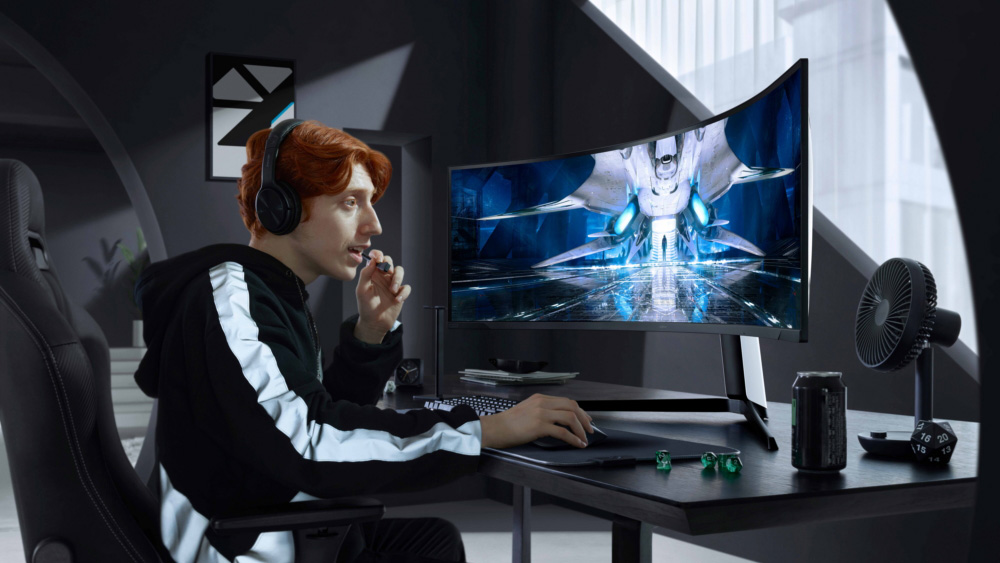
1. Samsung Odyssey Neo G9
We think this is the best ultrawide, superfast 1440p Samsung monitor
Size: 49-inch | Resolution: 5,120 x 1,440 | Brightness: 420 nits | Contrast ratio: 1,000,000:1 | Color gamut: 125% sRGB, 92% Adobe RGB, 88% NTSC 1976, 95% DCI-P3 | Inputs: 1x DisplayPort 1.4, 2x HDMI 2.1 | Panel Type: VA
At 49 inches, the Samsung Odyssey Neo G9 is an absolute behemoth. But while its size may be the first thing you notice about it, you’ll find that it ticks quite a few impressive things off the coveted premium features list. One of Samsung’s flagship monitors, this Quantum mini-LED boasts a peak brightness of 2,000 nits, a breathtakingly high contrast ratio, and a refresh rate of 240Hz. That’s not to mention Samsung’s Quantum HDR2000 technology and fully adaptive G-Sync and FreeSync Premium Pro support.
If that isn’t enough, you’ll also appreciate its ultrawide form factor, deep 1000R curvature, and undeniably stunning visuals, all of which help draw you into your game or perhaps even turn you into the ultimate MMO master. Plus, all that screen real estate means you can multitask all you want. However, its steep price of entry combined with the fact that you need a beefy PC to put it to work also means that it isn’t going to be for everyone.
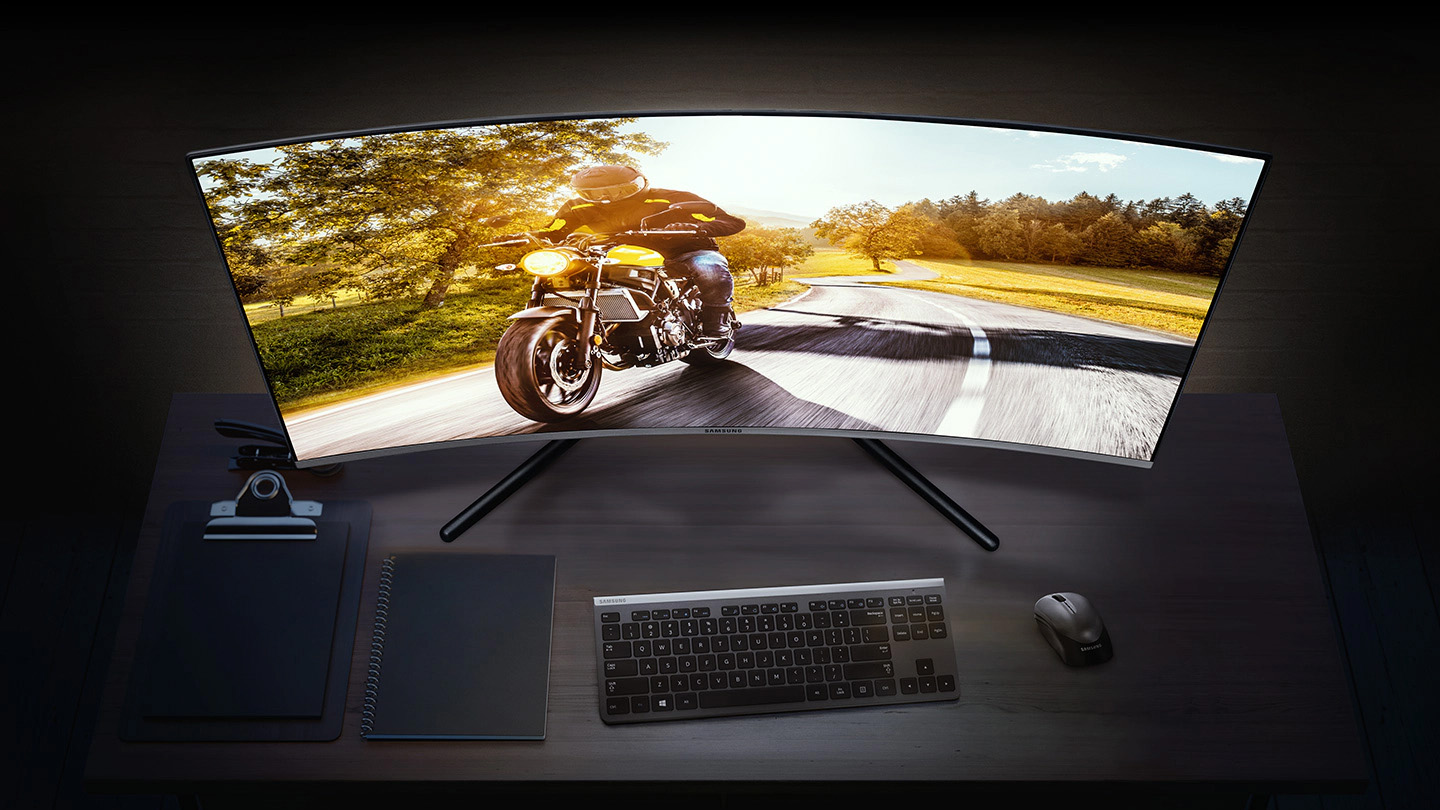
2. Samsung UR59C
We reckon this is the best budget 4K monitor from Samsung
Size: 32-inch | Resolution: 3,840 x 2,160 | Brightness: 250 nits | Contrast ratio: 2,500:1 | Color gamut: 103% sRGB, 76% Adobe RGB, 73% NTSC 1976 | Inputs: 1x DisplayPort 1.2, 1x HDMI 2.0 | Panel Type: VA
Even though 4K is fast becoming the new standard in monitor resolution, many 4K displays can still burn a big hole in your wallet. So, if you’re looking for a budget-friendly 4K monitor, there are compromises to be made. Take the Samsung UR59C, for example. This VA UHD panel may have hit that sweet spot with its 32-inch size, but it also has made some sacrifices – namely, its brightness, which is limited to 250 nits, and its disappointing port selection.
However, considering its affordable price tag and the excellent features it does offer, it’s still among the best Samsung monitors and worth looking into if you’re unwilling to shell out a lot of cash. It has a higher than average contrast ratio, great sRGB color gamut, and an immersive 1500R curvature. It needs calibration out of the box, but once that’s out of the way, you’ll enjoy stunning visuals worthy of pricier models.

3. Samsung M8
We think this is the best smart monitor for remote workers
Size: 32-inch | Resolution: 3,840 x 2,160 | Brightness: 400 nits | Contrast ratio: 3,000:1 | Color gamut: 99% sRGB | Inputs: 1x USB-C, 1x Micro HDMI | Panel Type: VA
Want a display that looks like Apple’s but won’t rob you blind in the process? Samsung’s new smart display, the Samsung M8, might just be the perfect alternative for you. Don’t get us wrong; it’s no Studio Display. Instead, its features are more down-to-Earth, which only makes it more ideal for users who do not need premium trappings like 5K resolution or six built-in speakers.
The M8 isn’t the best monitor for content creation, but it is a terrific monitor for all the other aspects of your business. That includes video calling with your team and clients, thanks to its magnetic 1080p SlimFit webcam. Other smart features abound as well. It boasts adaptive picture and adaptive sound for a better visual and audio experience catered to you and your surroundings. It supports both Bixby and Amazon Alexa. And it comes with Samsung’s Automatic Source Switch+, making it more seamless for you to switch from one video source to another.
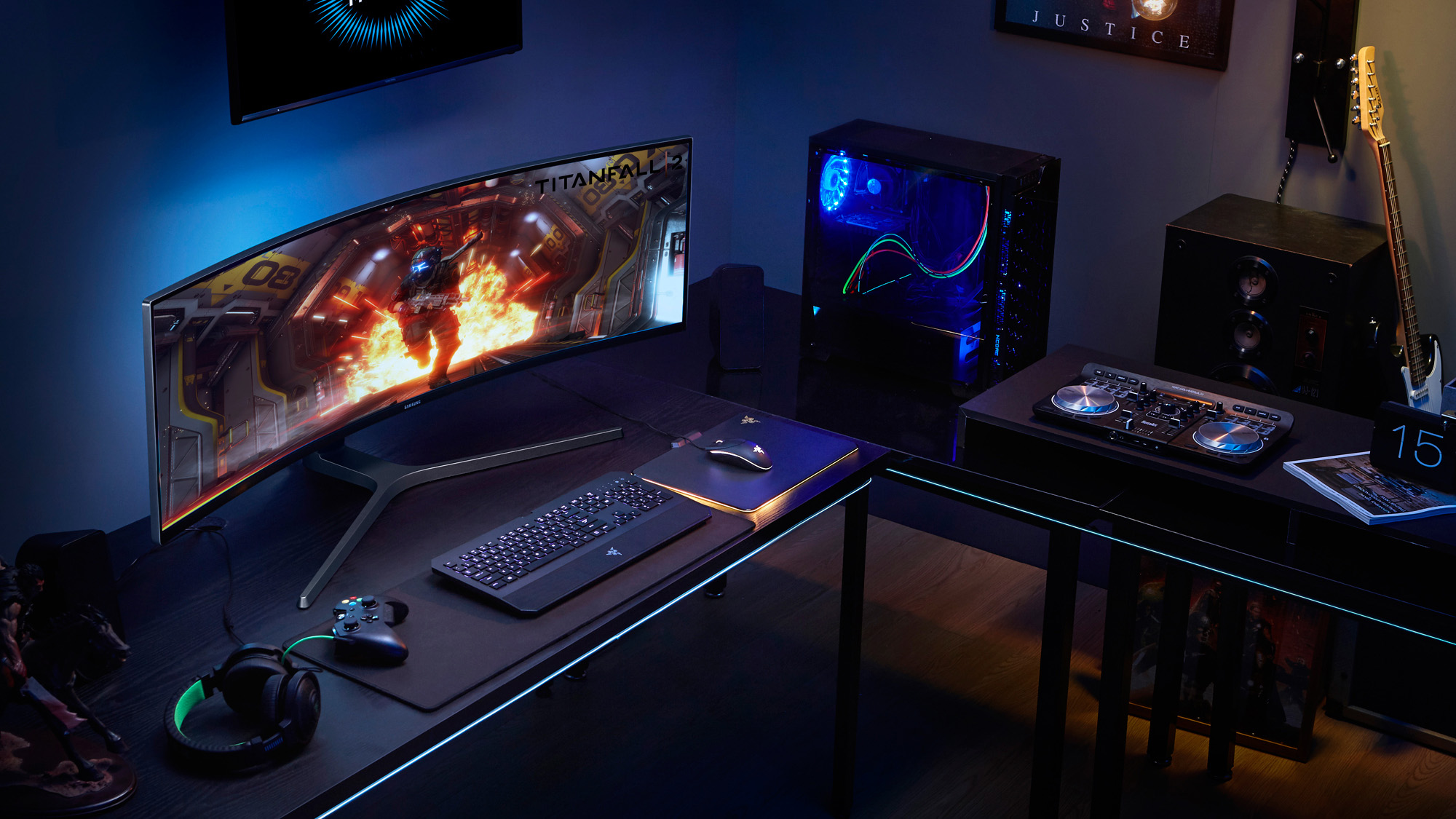
4. Samsung CHG90 QLED
For creative tasks we rate this the best ultrawide curved monitor
Size: 49-inch | Resolution: 3840 x 1080 | Brightness: 350 nits | Contrast ratio: 3,000:1 | Color gamut: 125% sRGB, 92% Adobe RGB | Inputs: 1x DisplayPort, 2x HDMI, 1x Mini DisplayPort | Panel Type: VA
You’ll appreciate the Samsung CHG90 QLED’s color-accurate, high-contrast ratio panel, whether you're a photographer or a graphic designer. However, it is better geared towards gamers, touting a high refresh rate of 144Hz, factory-calibrated game display modes, and the 20-step Black Equalizer that allows you to see better during your game’s dark scenes.
However, it’s also great for photo editing, graphic design, and most productivity tasks. That’s especially thanks to its 49-inch, ultrawide form factor that gives you a lot of space to spread out and work in. It is still at 1080p, so it isn’t exactly future-proofed. But, if you’re looking for a sub-$1,000/£1,000 ultrawide display, this is the best Samsung monitor for you.
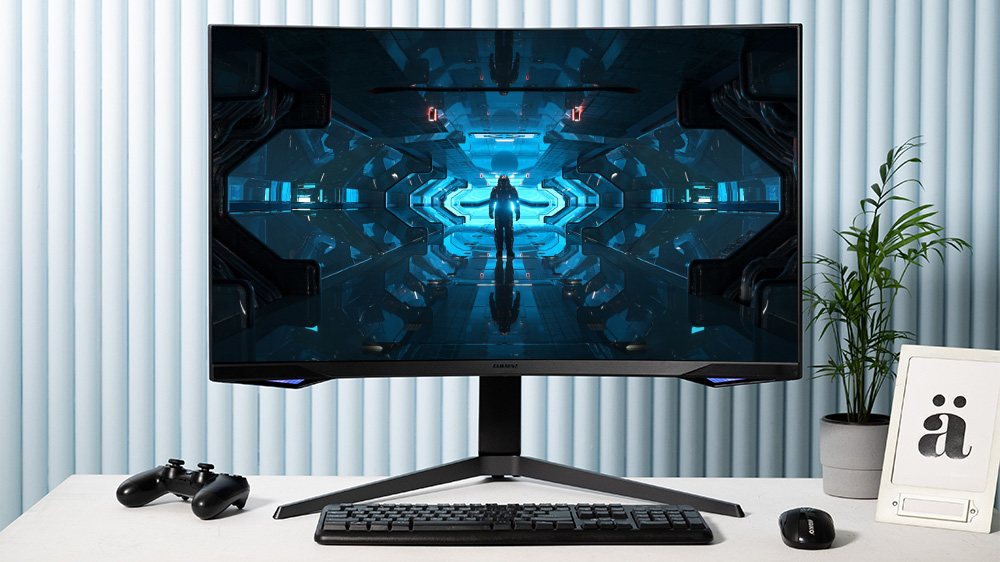
5. Samsung Odyssey G7
For us, the is the best 1440p Samsung monitor for gaming
Size: 32-inch | Resolution: 2,560 x 1,440 | Brightness: 300 nits | Contrast ratio: 2,500:1 | Color gamut: 125% sRGB, 95% DCI-P3 | Inputs: 2x DisplayPorts 1.4, 1x HDMI 2.0 | Panel Type: VA
Affordability meets top-notch quality in the impressive Samsung Odyssey G7. This 1440p 32-inch monitor is an absolute stunner, delivering excellent gaming performance as well as great color coverage and high color accuracy out of the box. That 240Hz refresh rate is nothing to joke about, especially alongside its Adaptive Sync. As a result, your gaming experience will be smooth as butter yet incredibly crisp.
For a mid-range gaming monitor, that’s already a lot. Add in its unique infinity core lighting and HDR 600, and it’s a fantastic value. The 1000R curvature on a 32-inch panel might be an acquired taste, though, so only invest if that’s appealing to you.

6. Samsung C27RG5
We rate this the best budget Samsung monitor overall
Size: 27-inch | Resolution: 1,920 x 1,080 | Brightness: 300 nits | Contrast ratio: 3,000:1 | Color gamut: 72% NTSC 1976 | Inputs: 1x DisplayPort 1.2, 2x HDMI 2.0 | Panel Type: VA
Smaller gaming setups require smaller monitors, and while the Samsung C27RG5 might be a 27-inch option (instead of a 24-incher), it’s still the best Samsung monitor for you if you’re a little tight on space. It may be the smallest option on this list and it may be limited to 1080p, but it packs a punch with its 3,000:1 contrast ratio, 240Hz refresh rate, and 1500R curvature.
Gaming on this display, therefore, means deep, vivid colors, sharp and smooth visuals, and immersion so profound you’ll feel like you’re in the game instead of just playing it. Plus, it’s also very cheap, especially considering everything it offers. There are some sacrifices here, naturally, but none so big it’ll put you off.
What we look for in a monitor
• Screen size: You might think that the bigger the screen the better, but that's not quite the case. A big screen might be good for movies and gaming, where will typically sit back from the screen, but for editing and office work, a 24-inch screen is likely to be quite large enough, as there are more important factors to consider like resolution, color spaces and brightness. Screen size is measured in inches across the screen diagonal.
• Resolution: A higher resolution will make the pixels disappear so that the image is sharp, smooth and ultra clean-looking. A 4K screen will give terrific quality, but a 1920 x 1080 screen will still show visible dots. Resolution is measured in pixels as width x height.
• Aspect ratio: Most screens these days have a 16:9 ratio to suit common video and broadcast formats. You can get wider screens, typically for gaming. These can work fine for regular use too, though the extra width may mean you need to turn your head to see the edges. Many ultra-wide screens are curved for a more 'immersive' experience.
• Contrast: The better the screen, the higher the contrast ratio and the more rich and vivid the image on the screen. It's the ratio of the brightess value that can be displayed versus the darkest. A contrast ratio of 1000:1 or more is very good.
• Brightness: Brightness is measured in 'nits', and the higher the value the easier the screen will be to see in bright lighting.
• Color modes: All monitors match the sRBG color space more or less, which is a lowest-common-denominator default color space for both digital devices and cameras. Better monitors also support the Rec 709 standard closely, which is like an sRGB standard for video. The best monitors also support the DCI-P3 standard, which has a wider color gamut and is used for professional video editing, for example.
How we test monitors
We test as many monitors as we can when preparing our buying guides, and outside of our reviews process we have used all the monitors we mention or their near siblings.
We evaluate a monitor with particular attention given to its core image quality, including brightness, contrast, color vibrancy and accuracy. While this can - and will - be assessed by the experienced eye of our professional reviewer, some manufacturer screen specs can only be definitively judged by an 'electronic eye' - a monitor calibrator. Where possible, a calibration device will be placed on the screen to verify its advertised color space coverage, brightness output and consistency, and factory color calibration accuracy.
Beyond image quality, we'll also scrutinise the monitor's display and data ports to ensure acceptable connectivity, and will give a thorough assessment of build quality, including the range of ergonomic adjustment in its stand. Only then will we determine if a screen is worthy of use by a discerning imaging or video enthusiast.
Get the Digital Camera World Newsletter
The best camera deals, reviews, product advice, and unmissable photography news, direct to your inbox!
Michelle is a writer and photographer based in Los Angeles, California. She regularly writes for Fodor's Travel, Steve's Digicams, Thrillist and Techlicious, and is currently a freelance SEO and Production Editor for TechRadar.

